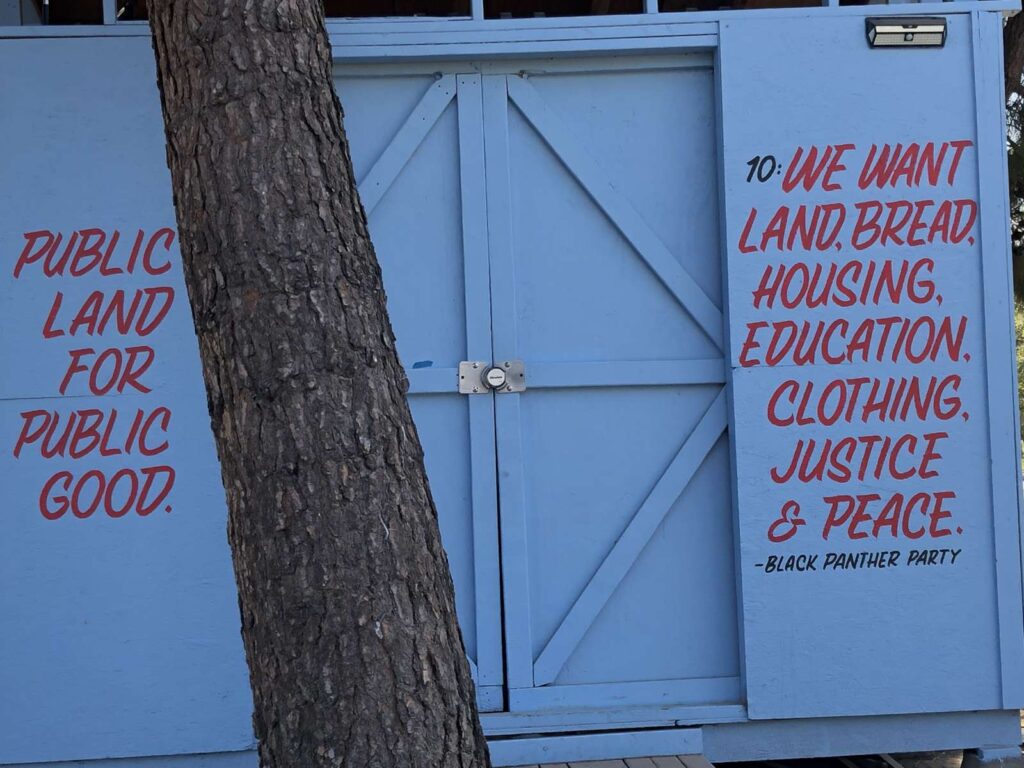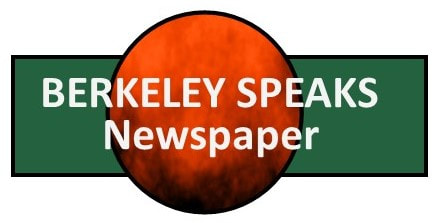On the Berkeley-Oakland border, just a few feet from the HERE/THERE sign that makes gentle fun of the two cities’ self-images, is a “pocket park” called Jasper P. Driver Plaza.
The streetside park has a powerful and iconic history as a center of the African American population, but is pretty much abandoned by the City of Oakland. It has been revived by the indomitable “Aunti” Frances Moore, who established the Self-Help Hunger Program in 2009 and kept it running, with virtually no government support, for fourteen years.
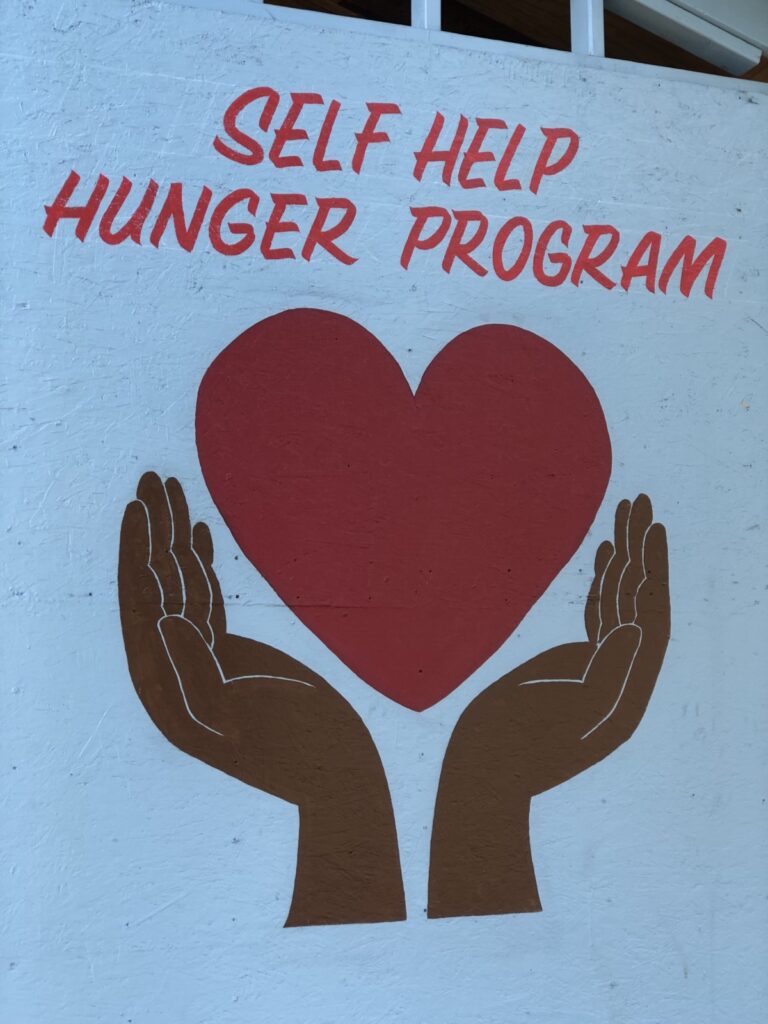
Aunti Frances is the soul of the Self-Help Program. She feeds hot lunch and provides produce to anyone who wants it, every Tuesday and Thursday. Why does Frances continue to serve people, year after year? She says, “this is not just a park, it is a movement.” From her teenage years with the Black Panther Party in the early 1970s, she learned that serving food is a powerful tool to organize the community.
Frances says that gentrification “wiped out a lot of lives” in this area. People’s Park, which was a community-based grassroots effort, is being destroyed. She says that is a warning sign of what could happen to the Self-Help Hunger Program in Driver Plaza.
When she first got involved with the park, it was about cleaning it up. People used the place as a dumping ground, for bottles, trash, old mattresses, needles. Then she saw that people were hungry, and she would cook a big pot of soup. It wasn’t a whole plan, just doing what needed doing, and it was therapy for herself as well.
Frances talks about the attitude of Oakland officials to the program. It has not been encouraging, even though her program is providing essential services to a significant number of people without other resources. Oakland did not recognize the institution that she built for many years, even bulldozing small structures, benches, an oven, and others that they have built. The program fought for over ten years before being allowed to get a port-a-potty—but has no City help in paying the $433 per month fee; no municipal garbage pickup is provided either. The City did not support the program because of pressure from developers, who fear it will give the neighborhood a bad reputation. In other words, it is too Black and too poor.
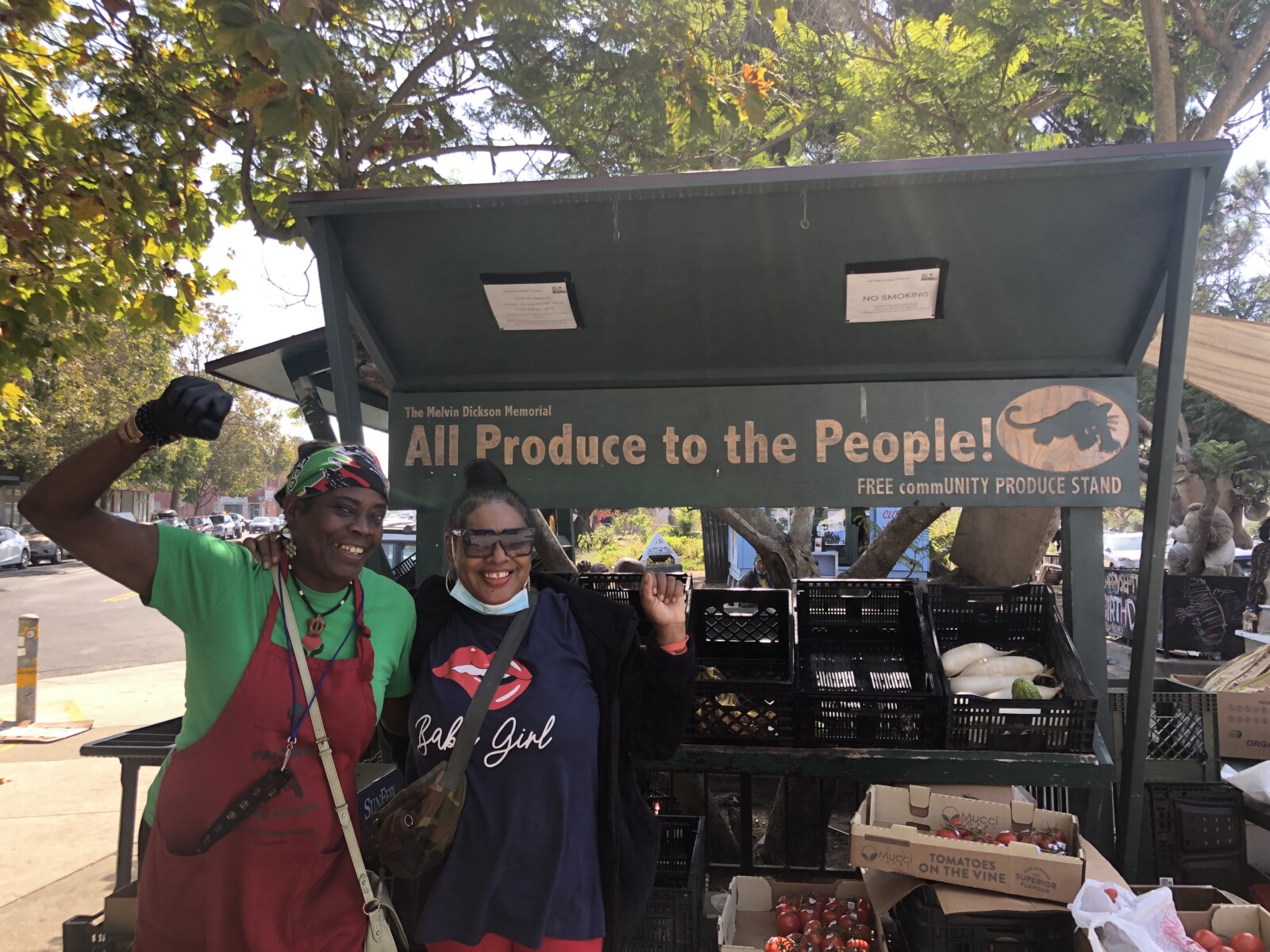
A KQED article in 2015 reported that, for some regulars,
The toilet isn’t really the issue. It’s about the continued existence of their longtime cultural space, in a neighborhood that dropped from 53 percent African-American in 2000 to 36 percent in 2010.
On a rainy afternoon, Kedar Akbar was one of at least a half-dozen men sitting on benches and rolling office chairs. He said that when he was in fifth grade, there were some barbecues and a play structure out here. Now he comes to learn from his elders.
There’s a lot of wisdom that is also here that you can’t get in books or you can’t Google it. Because racism isn’t just social, it’s structural. So we don’t have these things intact for us, and this is one of the few ways, unfortunately, that it’s preserved, is through the oratory things and them telling stories. A lot of these people are from Mississippi, they’ve gone through the ’60s. This is a Black Panther neighborhood, Nation of Islam and all of these — and SNCC and things like that.”
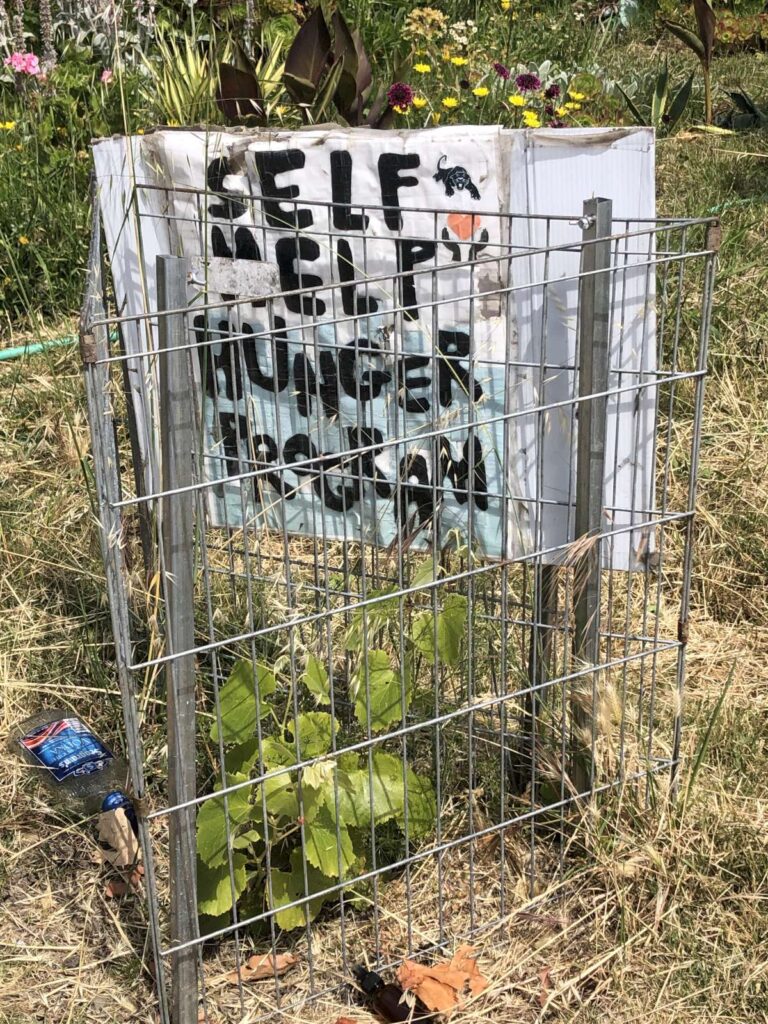
Instead of providing financial support for the Self-Help program’s life-saving and transformative work, Oakland requires money for permits and the like. When Aunti Frances asks a city council member and a county supervisor for help, she just hears…”crickets.” No response.“
Some neighbors have been very helpful to the Self-Help project, including a homeowners group called the “Santa Fe Community Association and Neighbors (Santa Fe CAN),” which essentially adopted it; and community organizations such as Phat Beets Produce. Others, however, are still mobilizing against it; some want to take out the bus stop near the park, or to convert Driver Plaza into a dog park.
Frances realized, “The City will do nothing for us. We have to do it.” The lack of official support has forced the participants in the Self-Help Hunger Project to depend on themselves. The model could be described as collective self-help. Frances is the kind of leader who leads by example, driven by her visions of divine empowerment and love for underserved people. She establishes certain expectations, including the need to keep the place organized and clean. She also insists, “We are here to look out for each other, to share the resources.” And she says the participants are learning new ways to resolve conflict. “Things do come together … after a struggle.”
Aunti Frances says “I am the people I serve. I’ve suffered homelessness, addiction, mental health challenges. So having those experiences I know what it’s like and I understand the importance of having community support.”
The program conducts consciousness-raising on an ongoing basis. “Every day is Black History Month. We commemorate Black August; Earth Day; Mothers’ Day.”
Whatever comes up, they deal with. They do housing support, grants for emergency hotel stays. “Housing is fundamental,” Frances says. Several participants are paid for their work for the program: cooks, drivers, groundskeeping.
To support the Self Help Hunger Program, please visit www.Selfhelphunger.org. You can make a financial donation or find a way for your organization to get involved.
